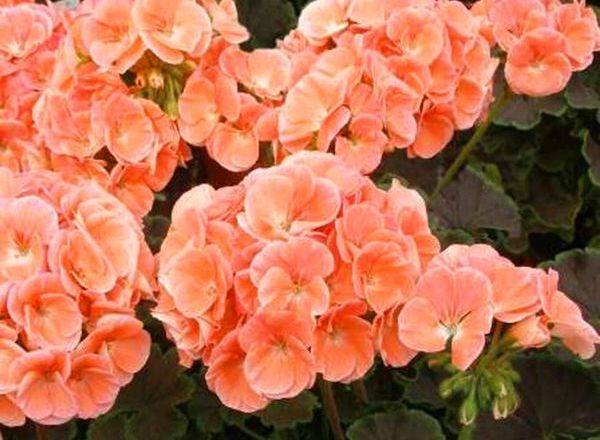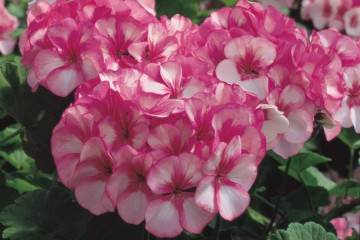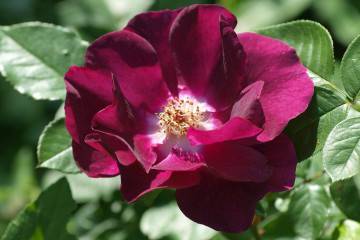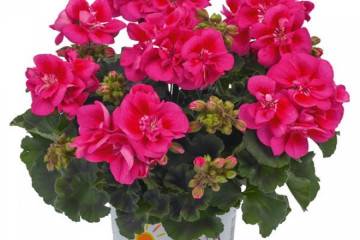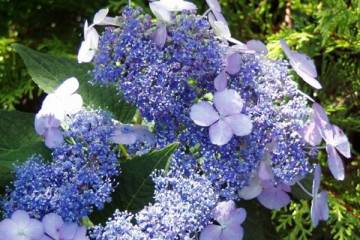Pelargonium Night Salmon - description of varieties of the Salmon series
Content:
Pelargonium can be attributed to one of the most common crops grown at home and outdoors. Among the wide variety of varieties, you can opt for the Salmon variety.
Appearance and features of pelargonium
Geranium of this variety grows up to 35 cm in height. The diameter of the bush is from 20 to 25 cm. Suitable for growing in open and closed ground. The flower prefers to grow in sunny areas, but it also tolerates partial shade. Inflorescences bloom in the year of sowing. The shade of the flowers and their appearance depends on the variety.
Description of the popular varieties of Salmon pelargonium (Salmon)
These plants belong to the group of zonal pelargoniums. The most common varieties are described below.
Night Salmon F1
Pelargonium Night Salmon or Pelargonium Brocada Night Salmon is distinguished by large globular inflorescences. Salmon-colored flowers. With proper care, it blooms all year round.
PAC Salmon Komtess
Terry inflorescences, light pink. There is a white border around the edges of the petals.
Pac salmon queen
Pelargonium Pac Salmon Queen forms large inflorescences, collected from several flowers. The petals are pink with a light pink border around the edges. Pelargonium Pak Salmon Queen blooms early. The variety is unpretentious in care.
Priory salmon
Pelargonium Priori Salmon is distinguished by unusual inflorescences. The flower petals are thin and long, light salmon color.
PAC Salmon Princess
Terry inflorescences, flowers of a light pink hue. In appearance, it resembles the Salmon Queen pelargonium variety.
Planting and further care
It is better to plant a flower in spring, when the growing season has just begun. Before planting on the bottom of the pot, you need to fill in a layer of drainage. Then you can plant the plant.
Watering, spraying and fertilizing
Pelargonium Salmon Queen, like other varieties, prefers moderate watering with warm, settled water. The flower can be sprayed 1-2 times a week.
Pruning
Pelargonium does not need frequent pruning. Regularly you need to cut off faded inflorescences and yellowed leaves.
Reproduction
The most common way to propagate a flower is by cuttings. The best time for grafting is summer or winter.
How to propagate by cuttings:
- The apical cuttings are cut at an angle of 45 degrees. Each of them should have 3 leaves.
- Before rooting, the place of the cut is sprinkled with charcoal.
- The prepared cutting is planted in the ground.
- Sprout is watered and covered with a cap.
Once a day, the cap must be removed for 10 minutes. After a few weeks, the cap can be removed completely.
Rooting usually takes 4-5 weeks. The first inflorescences will appear about 5-7 months after planting the cuttings.
Diseases and pests, means of combating them
Common diseases and pests:
- Gray rot. The plant is transplanted into new soil, the decayed parts of the roots are cut off before transplanting and treated with a solution of potassium permanganate. In the future, you need to prevent the overflow of the flower.
- Rhizoctonic rot. It is necessary to stop watering, treat the plant with Fundazol, Vitaros or Rovral.
- Verticillary wilting. Treat the bush with Fundazol or Vitaros.
Insects include aphids and spider mites.Spraying with soapy water is effective against aphids. Ticks are removed using acaricidal preparations.
Geranium fell in love with flower growers for its beautiful and abundant flowering, a variety of varieties and unpretentious cultivation.
